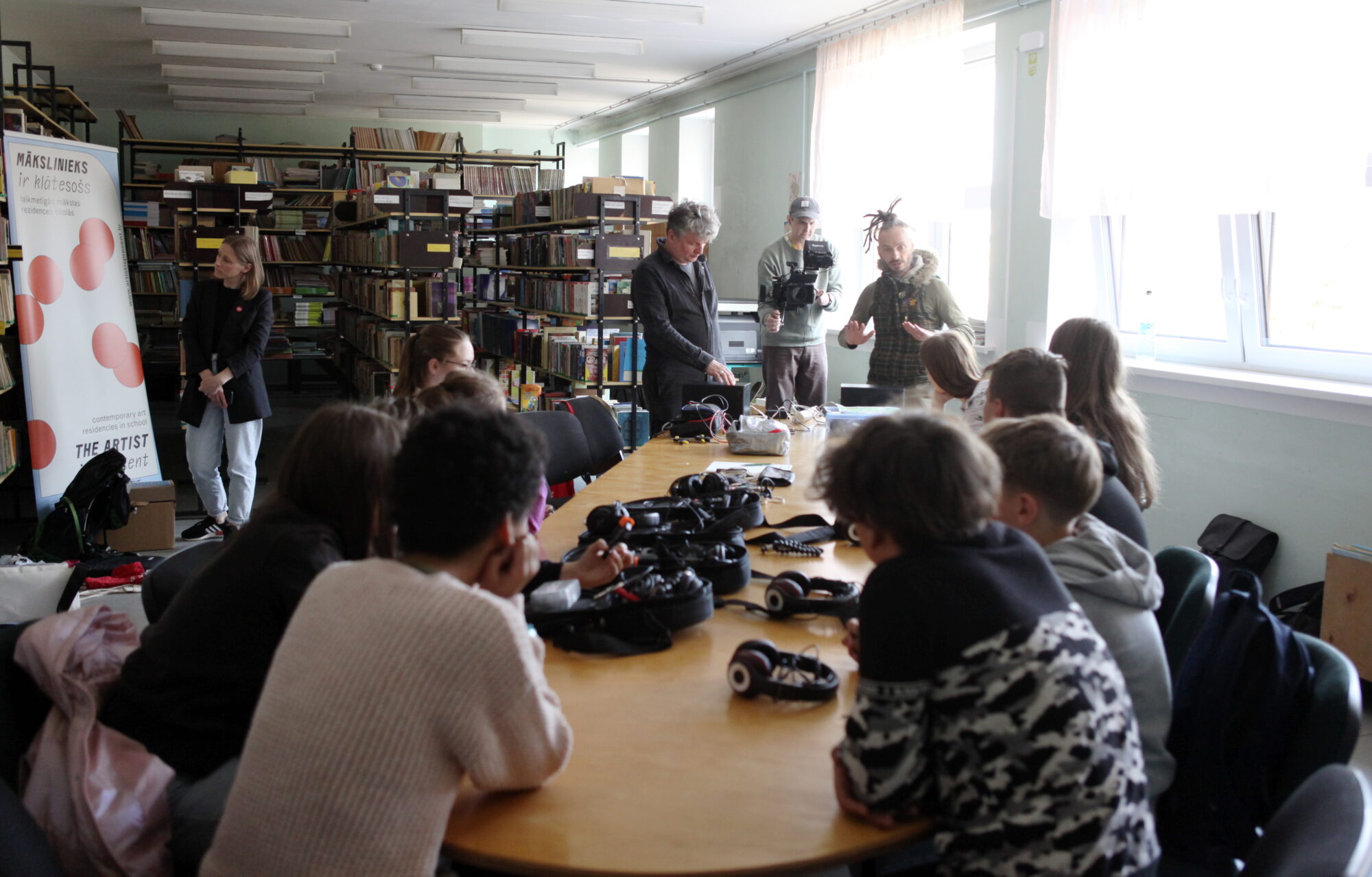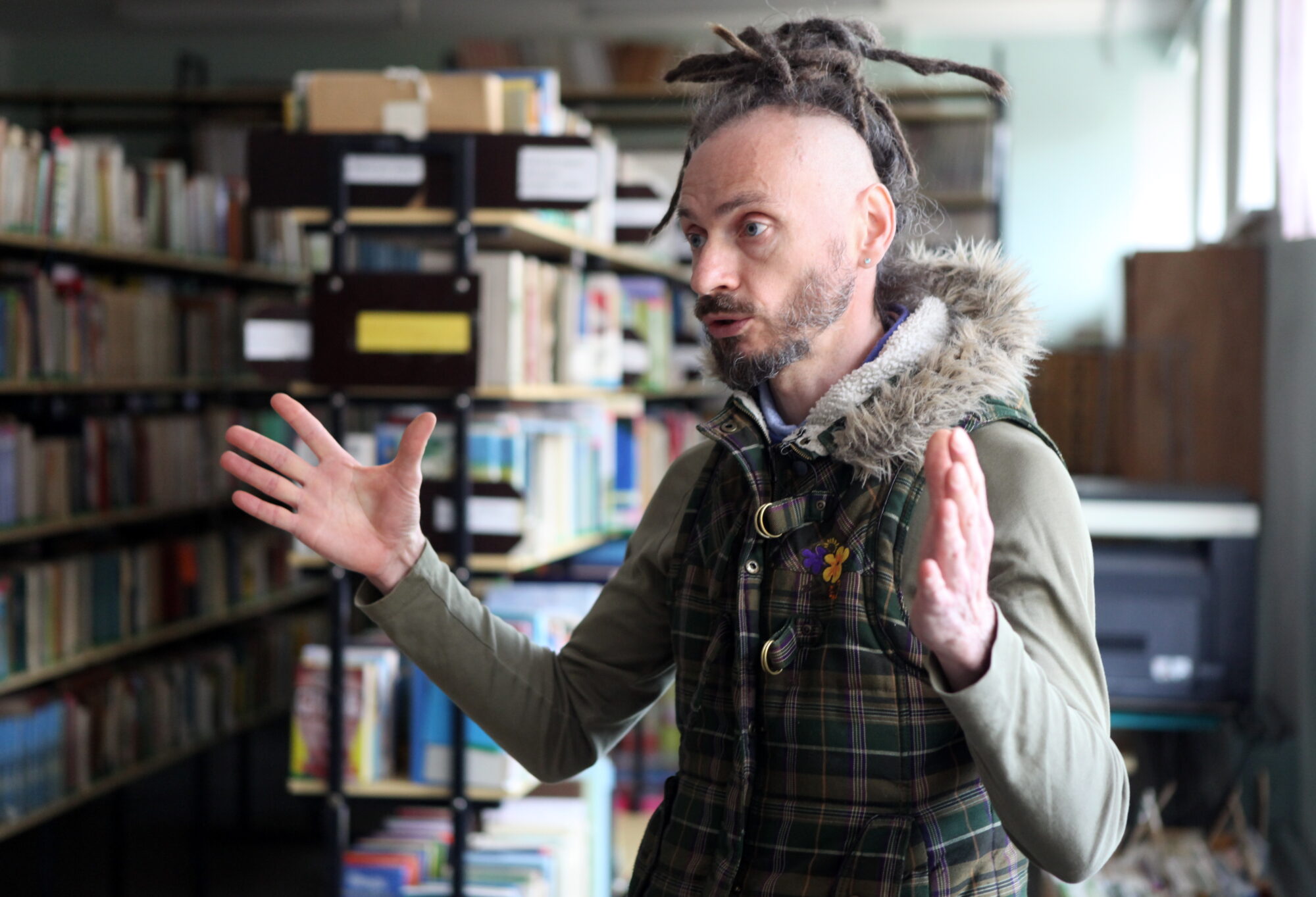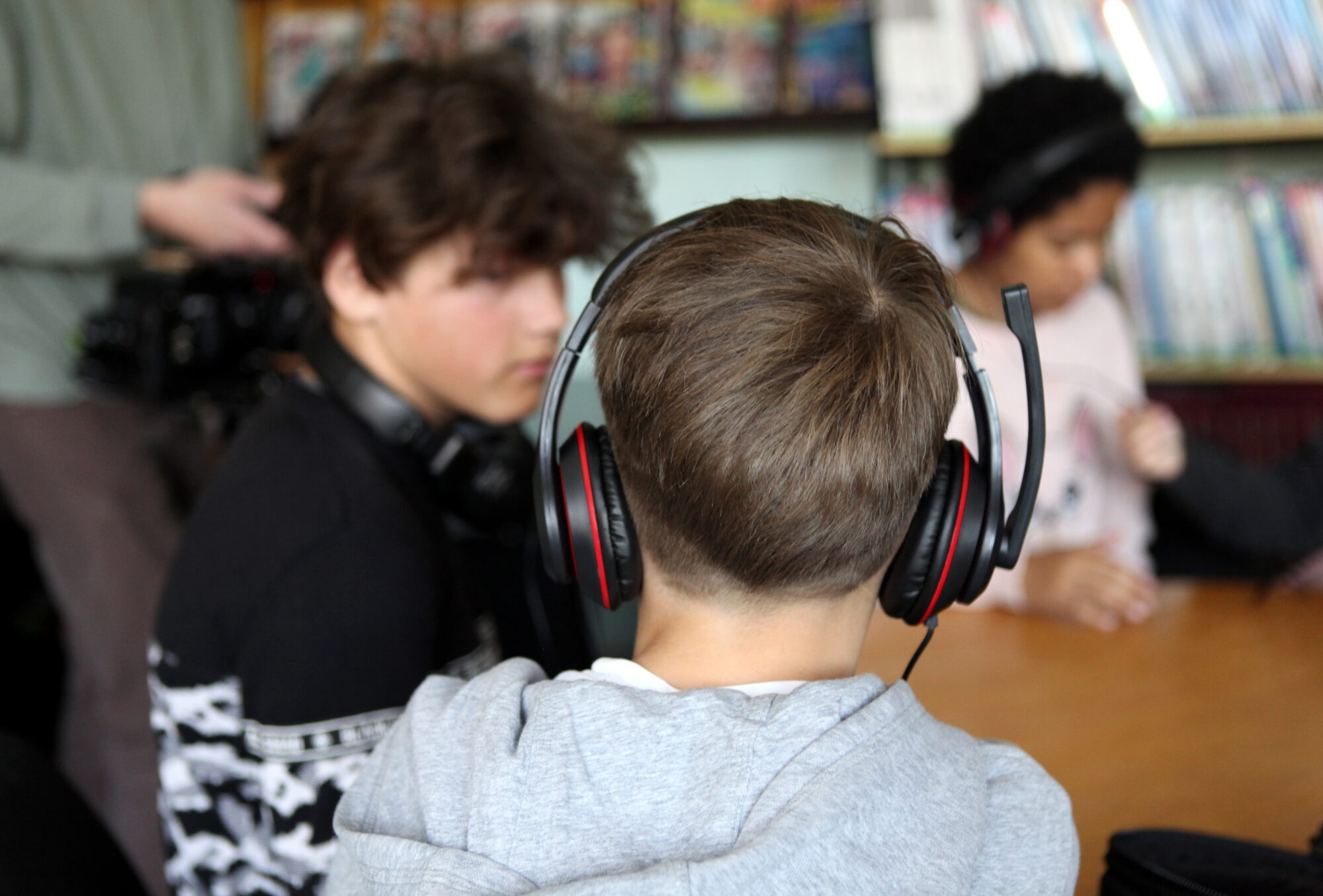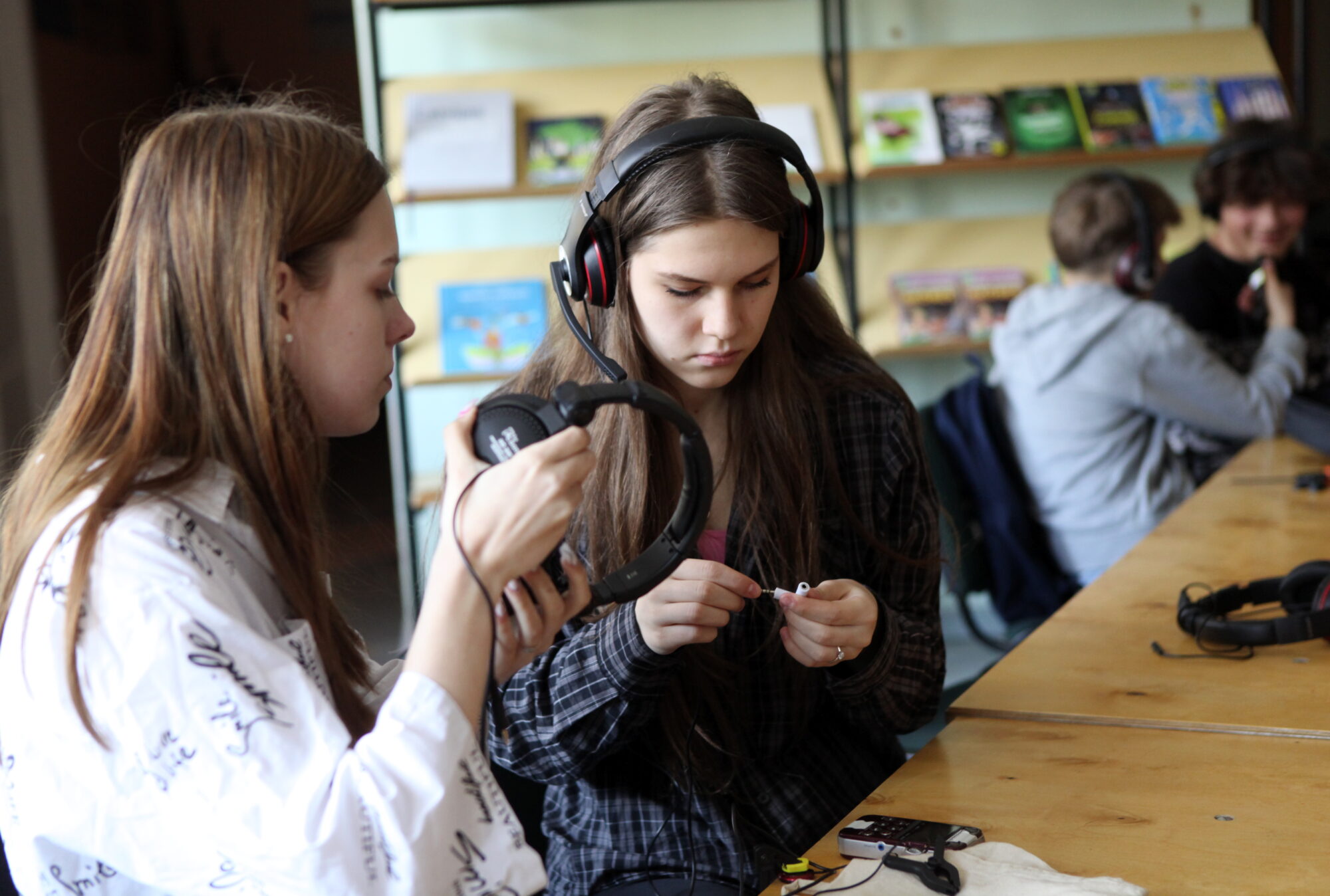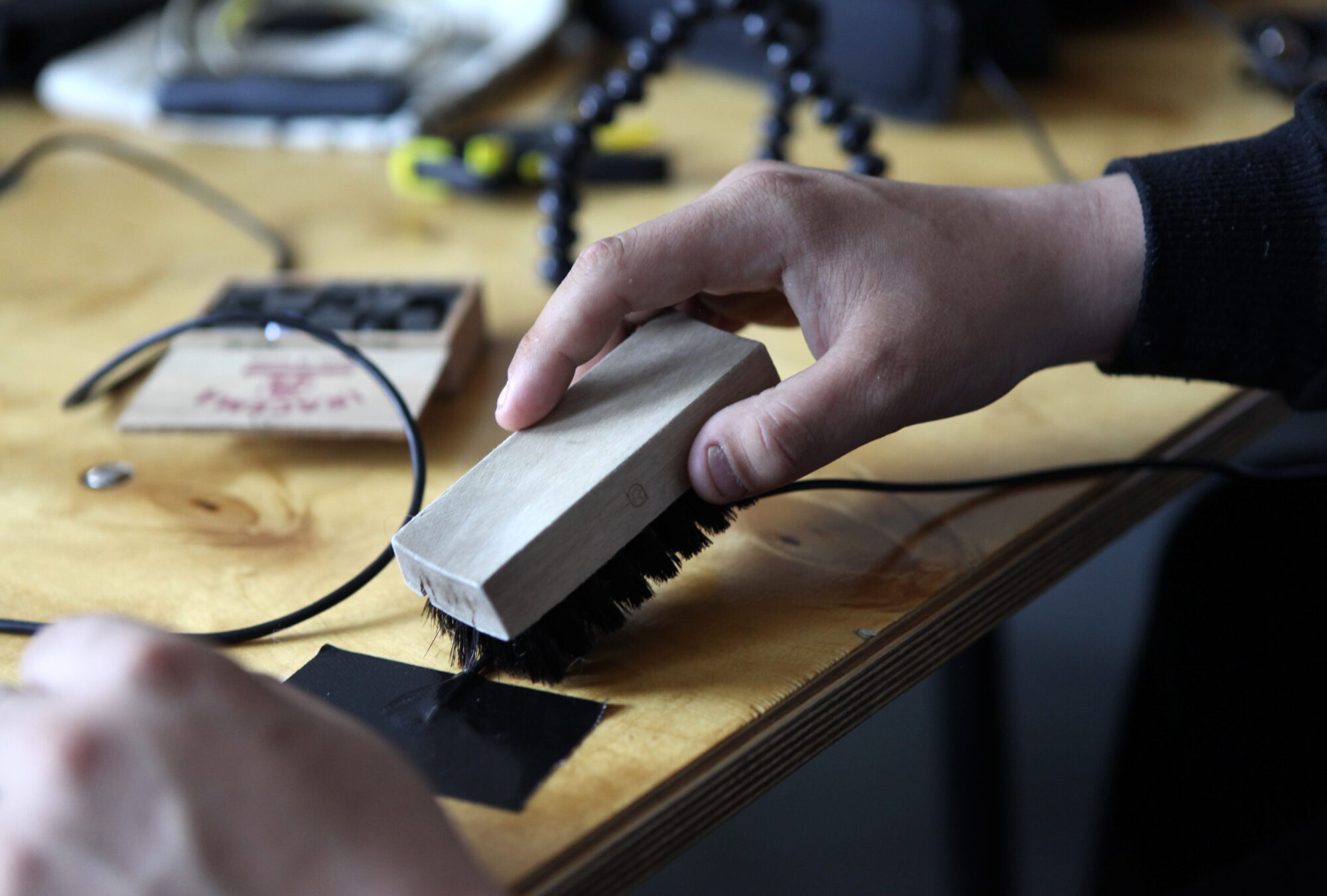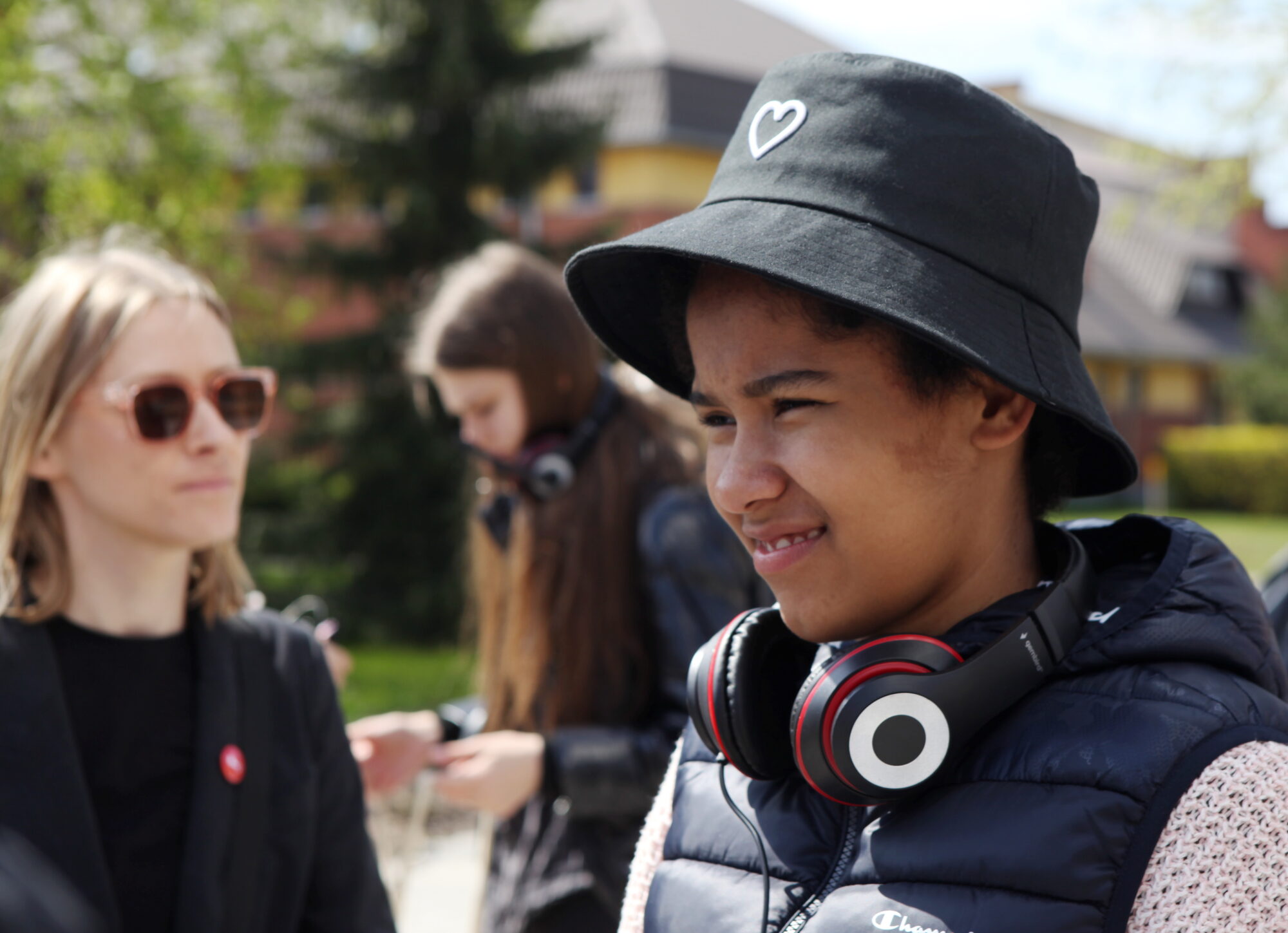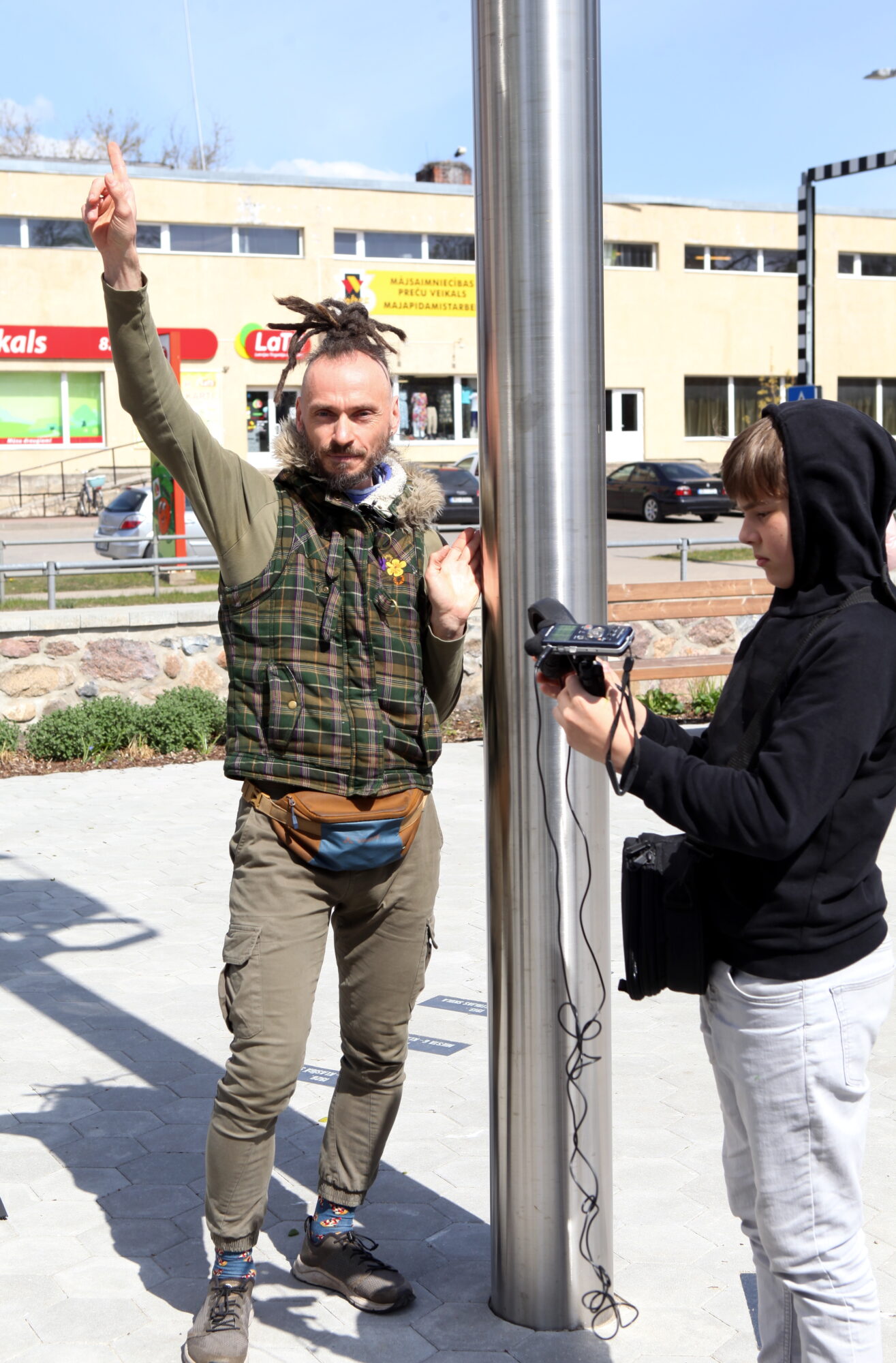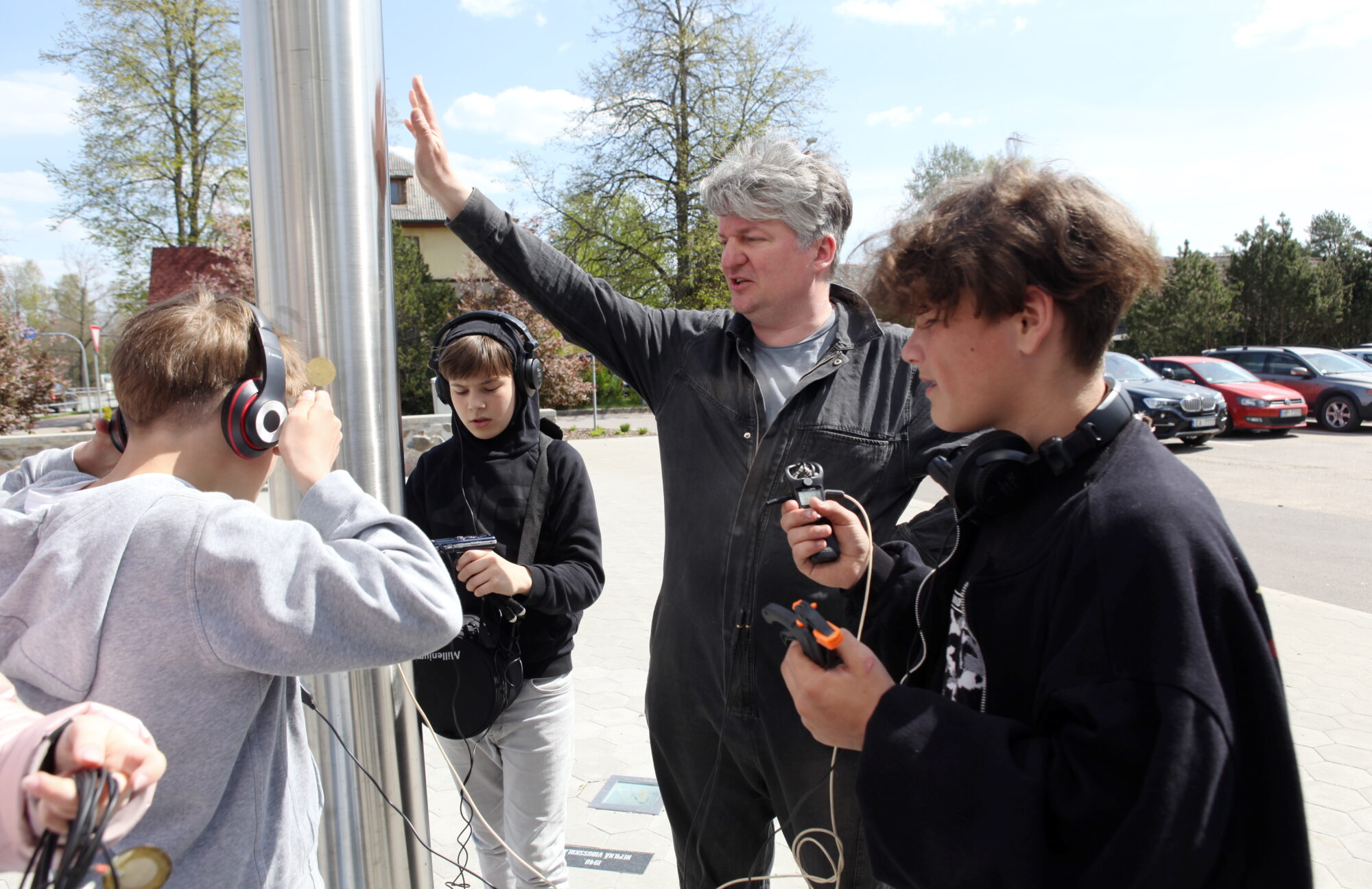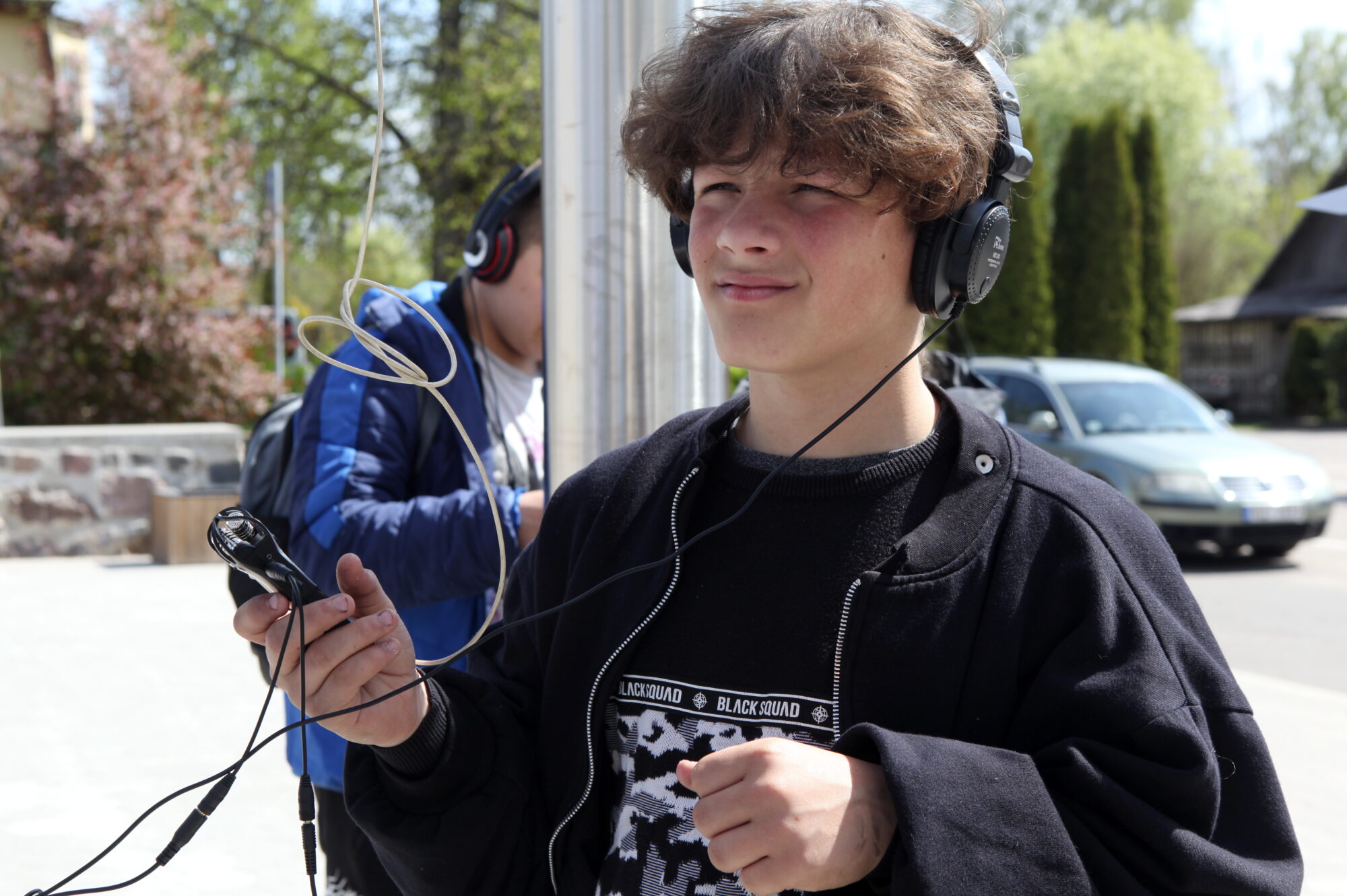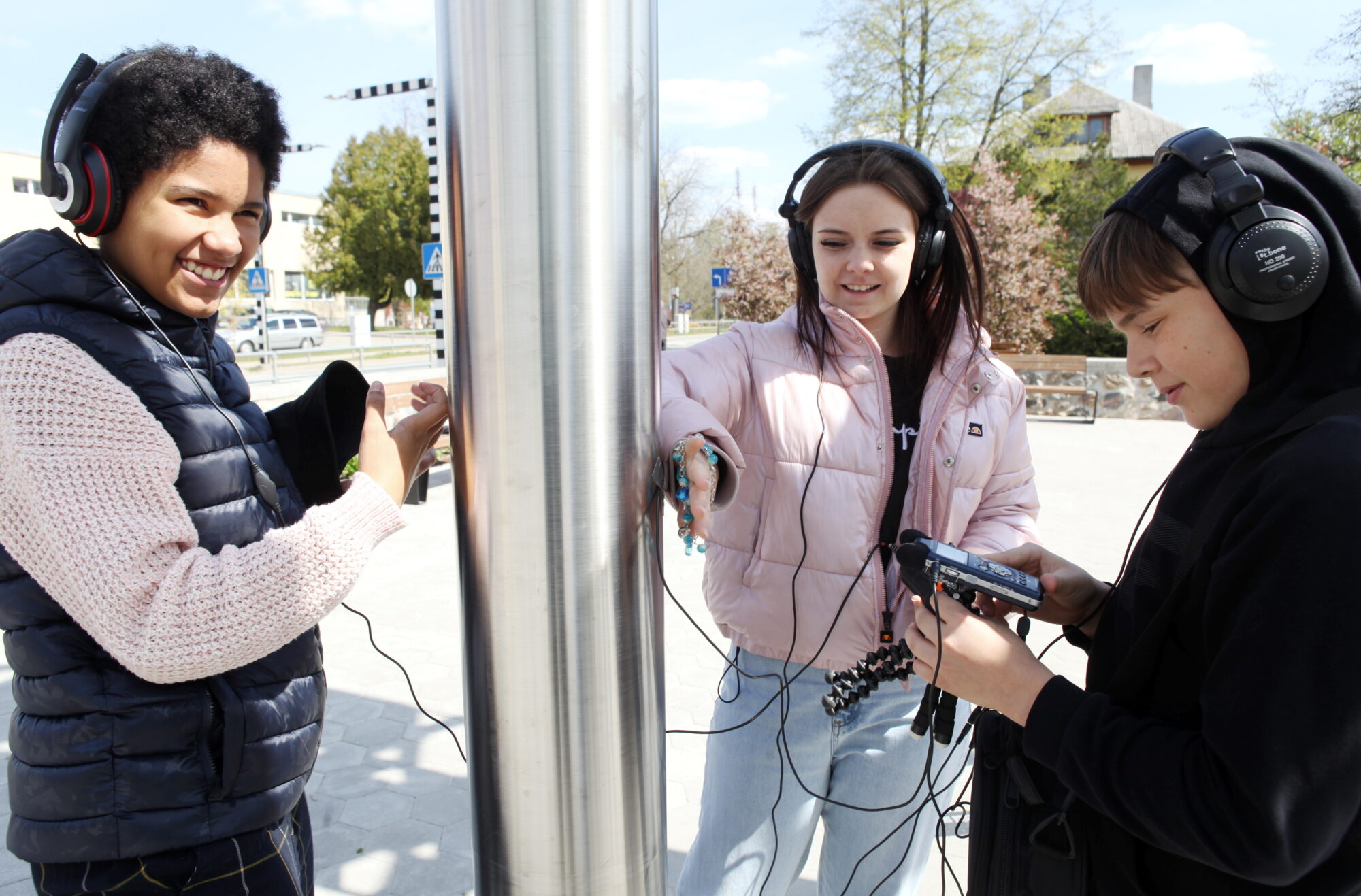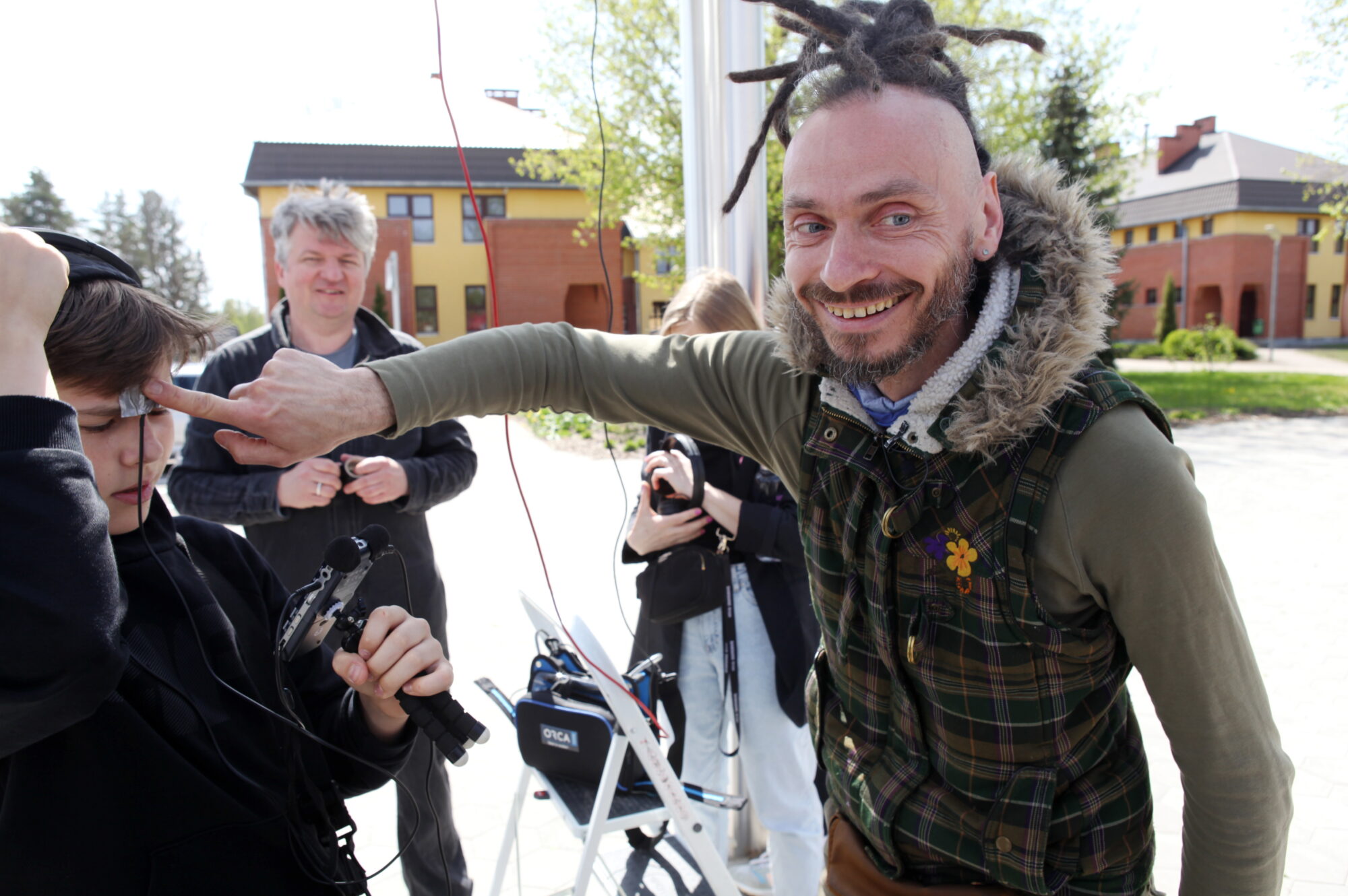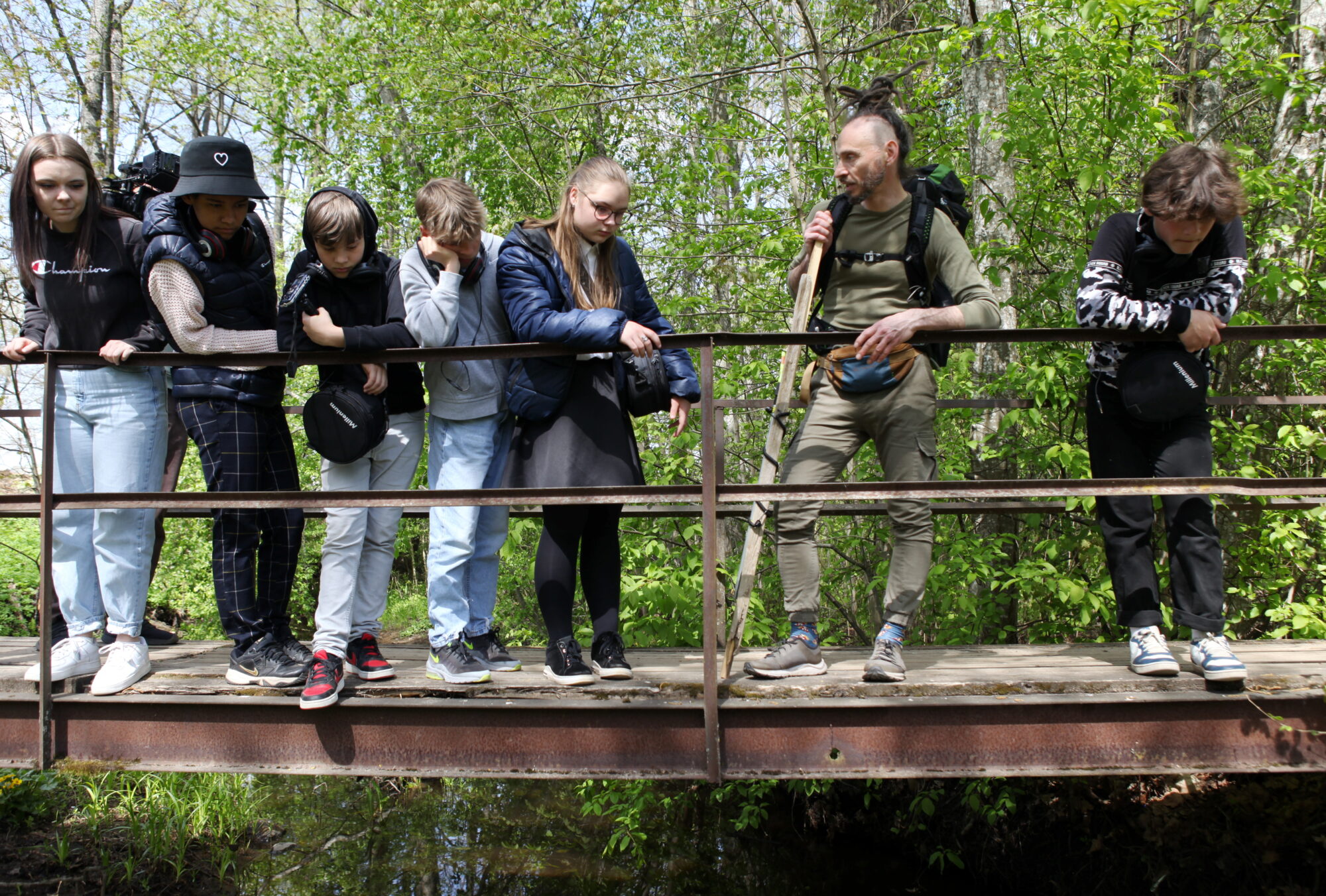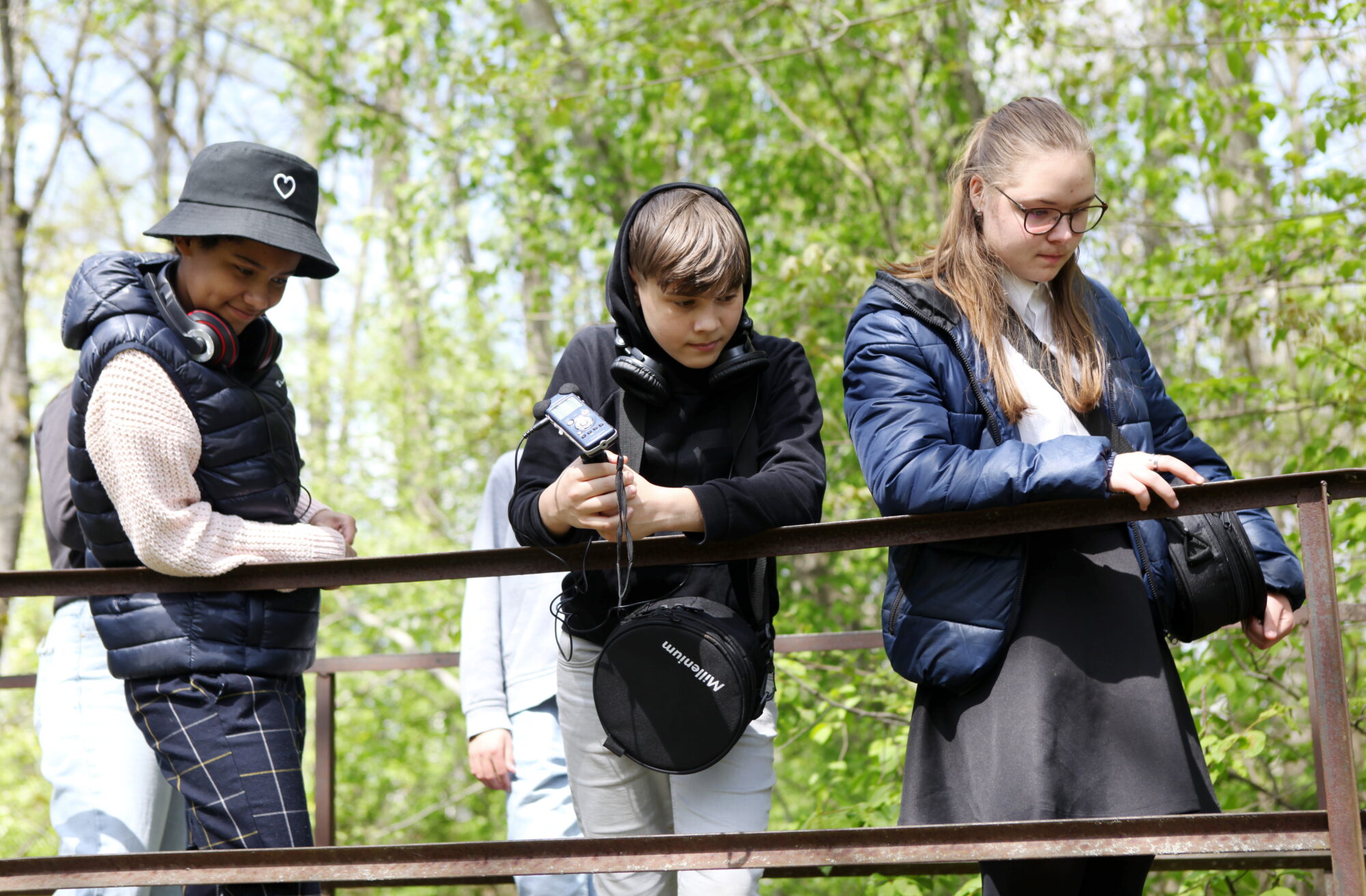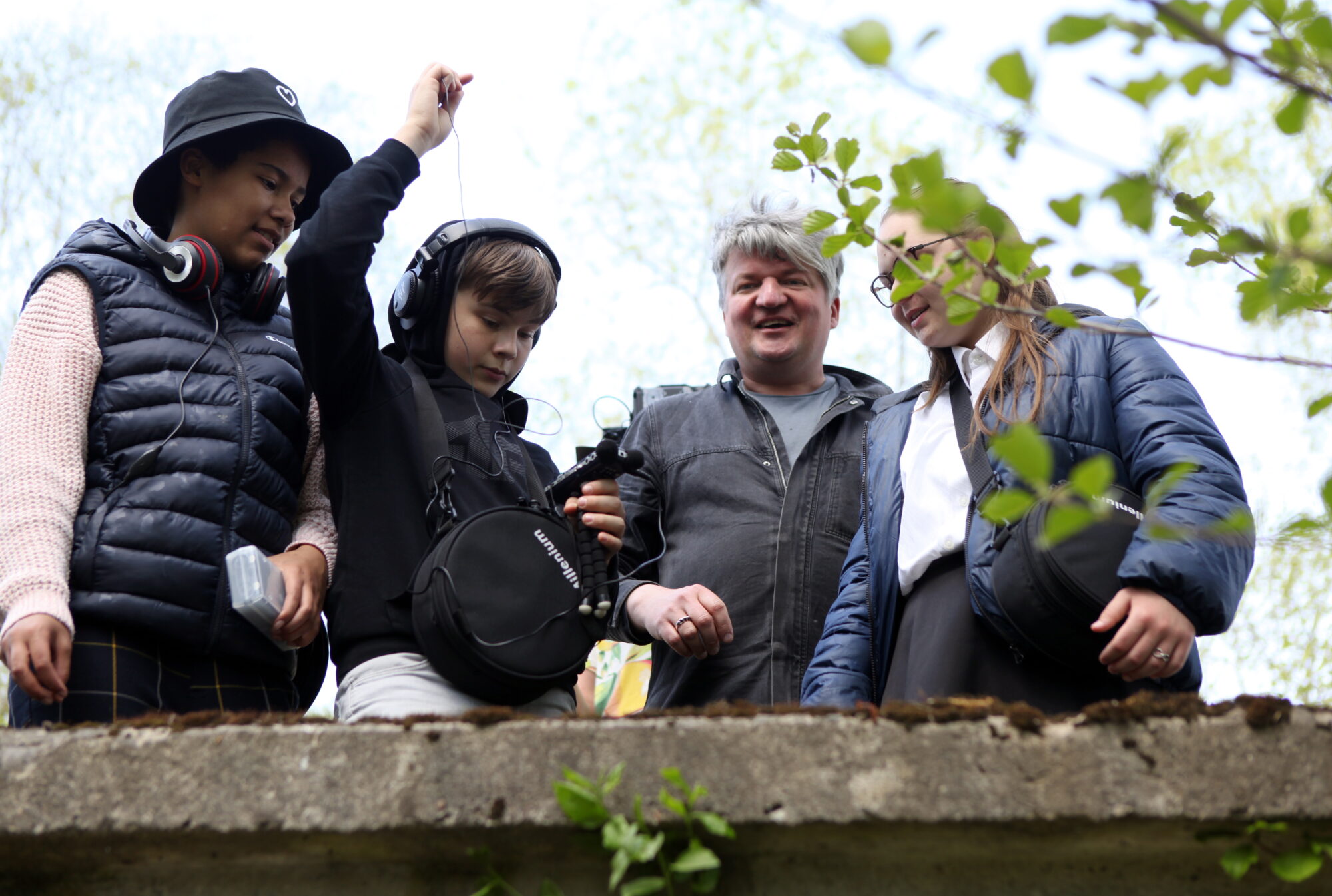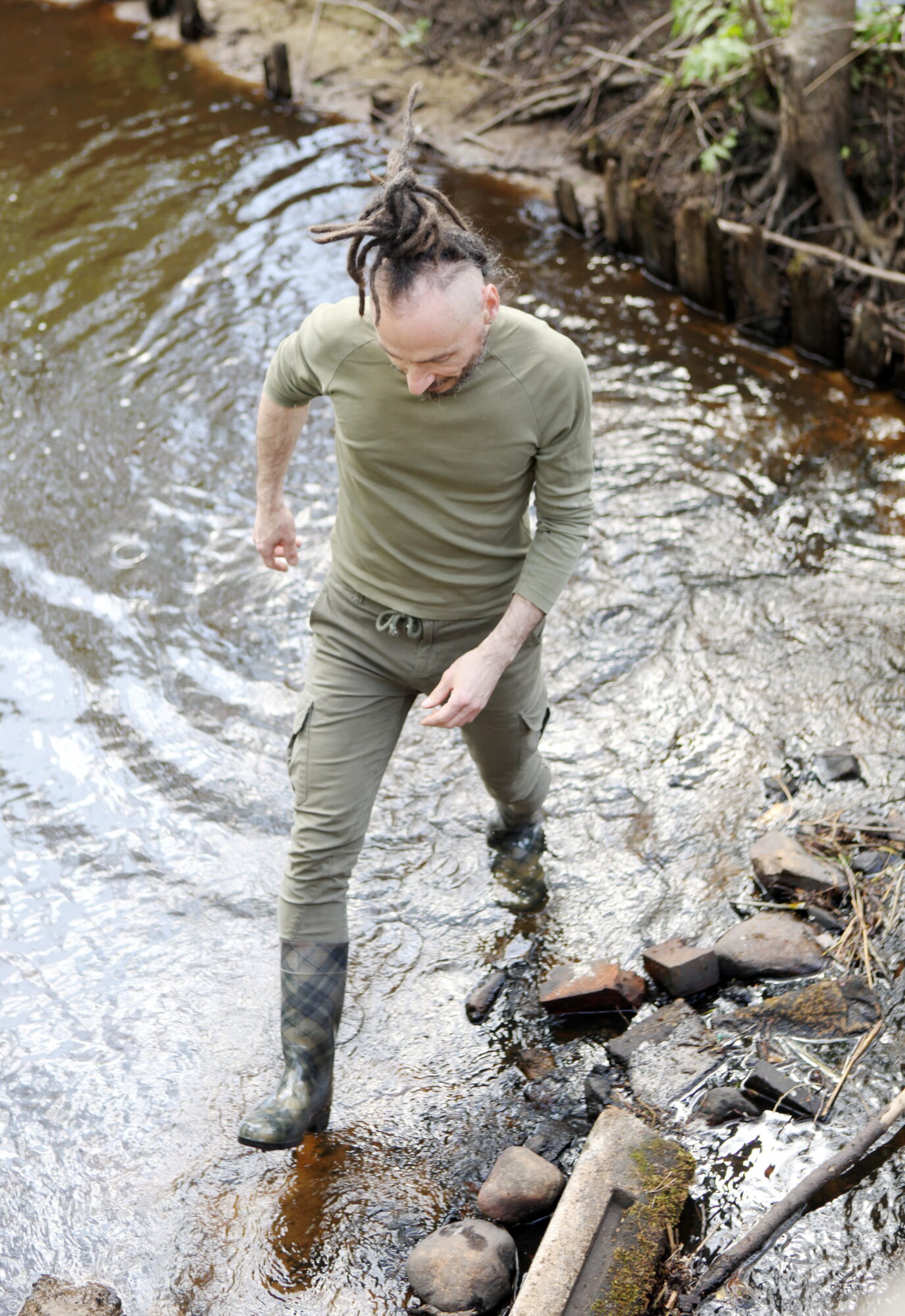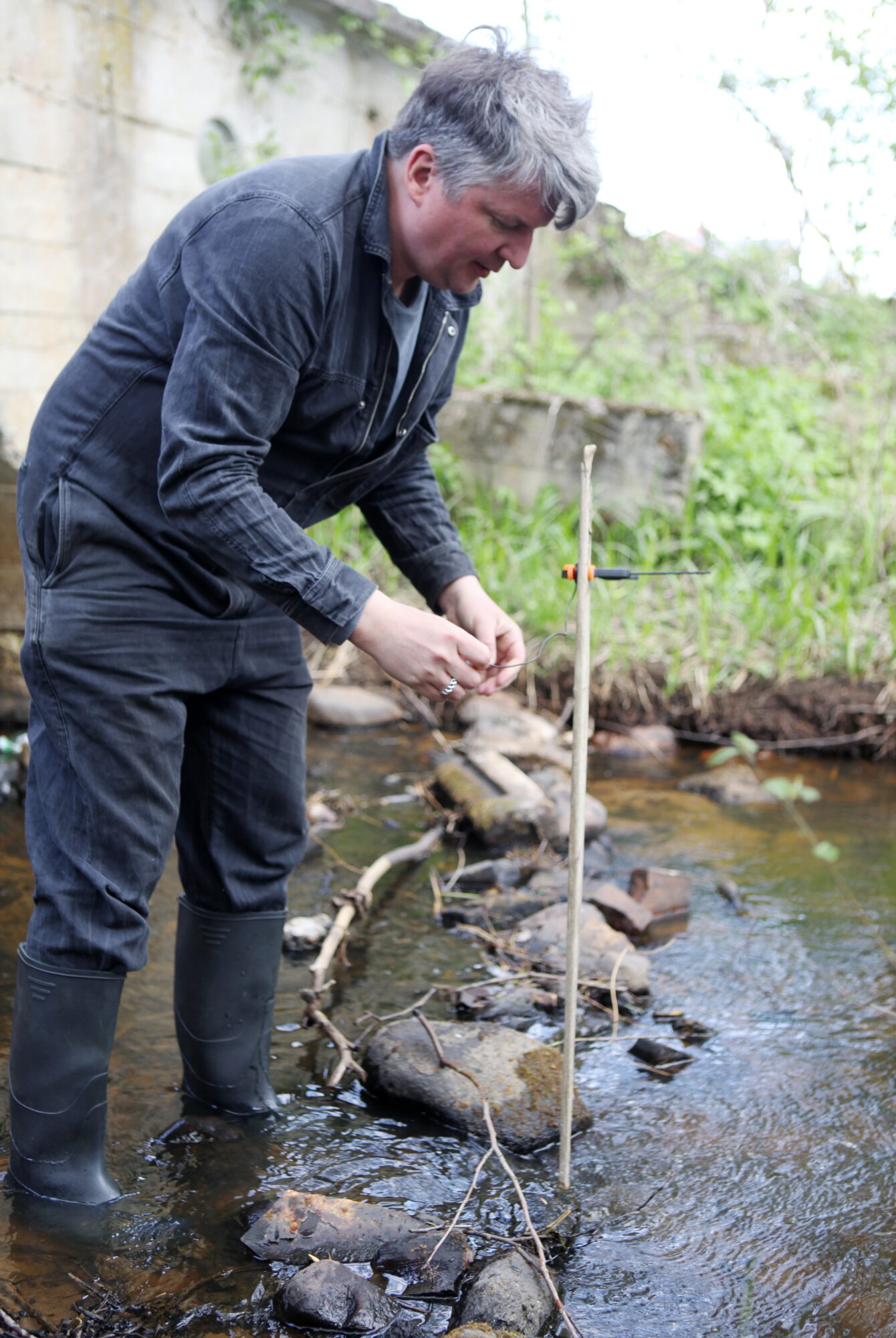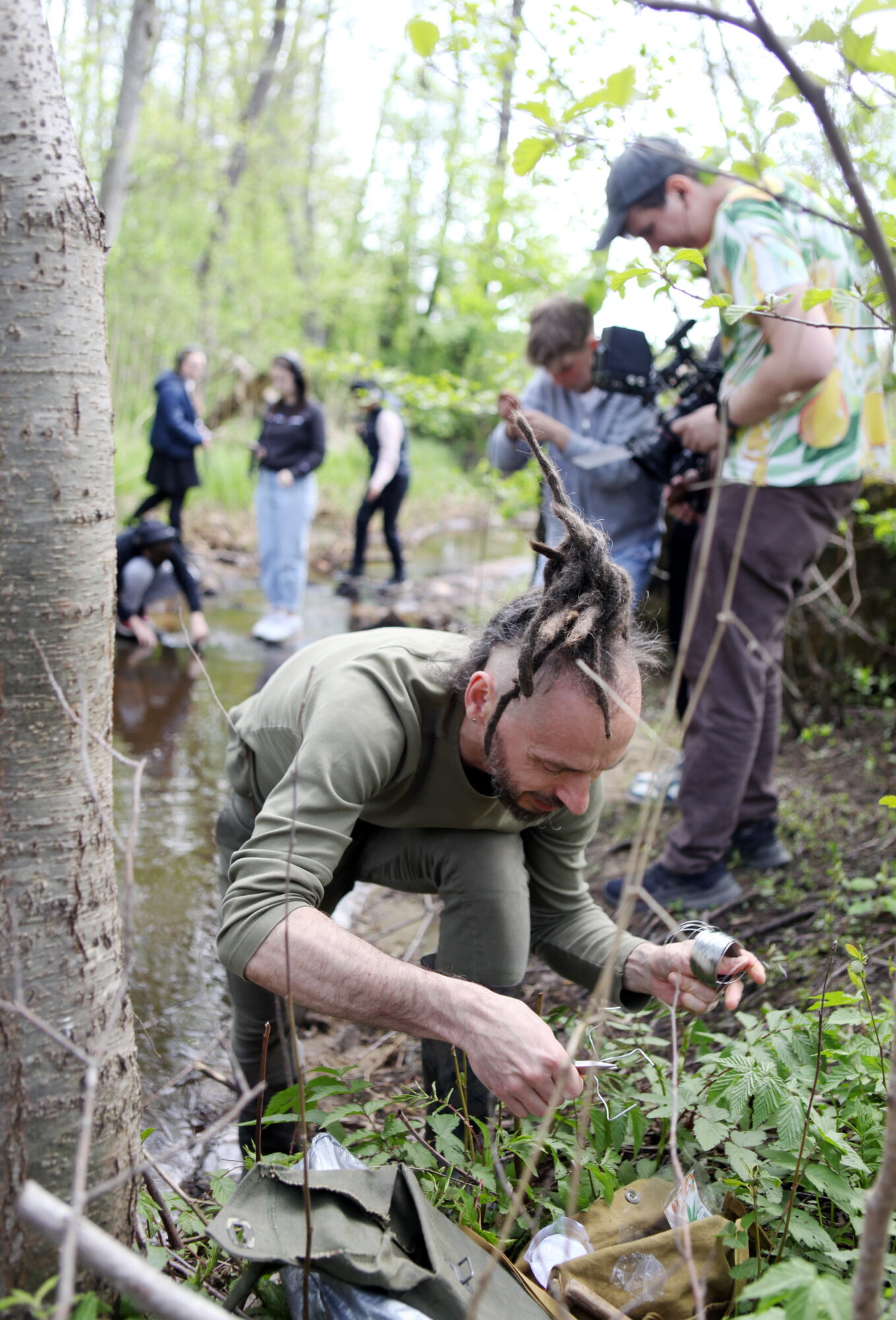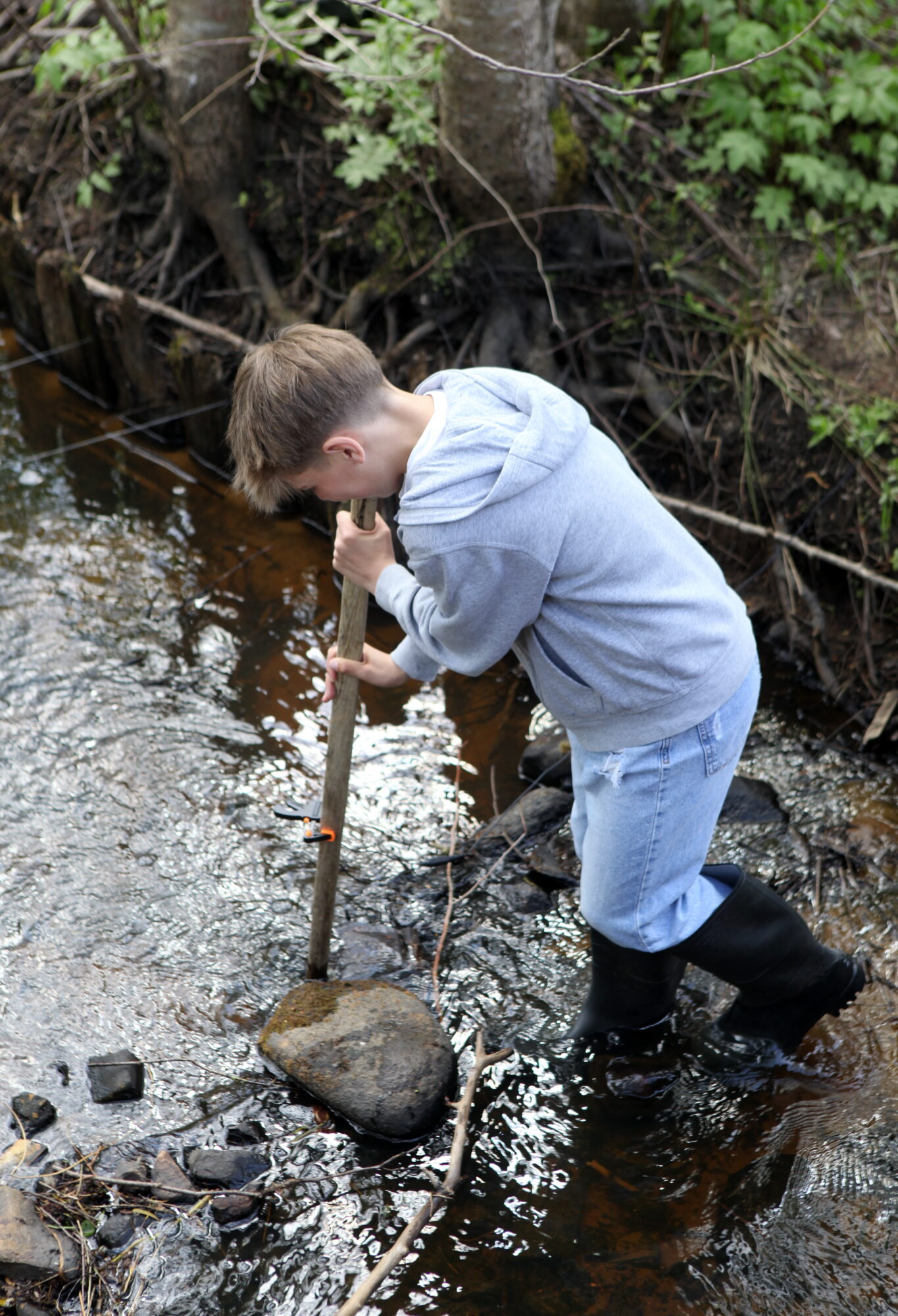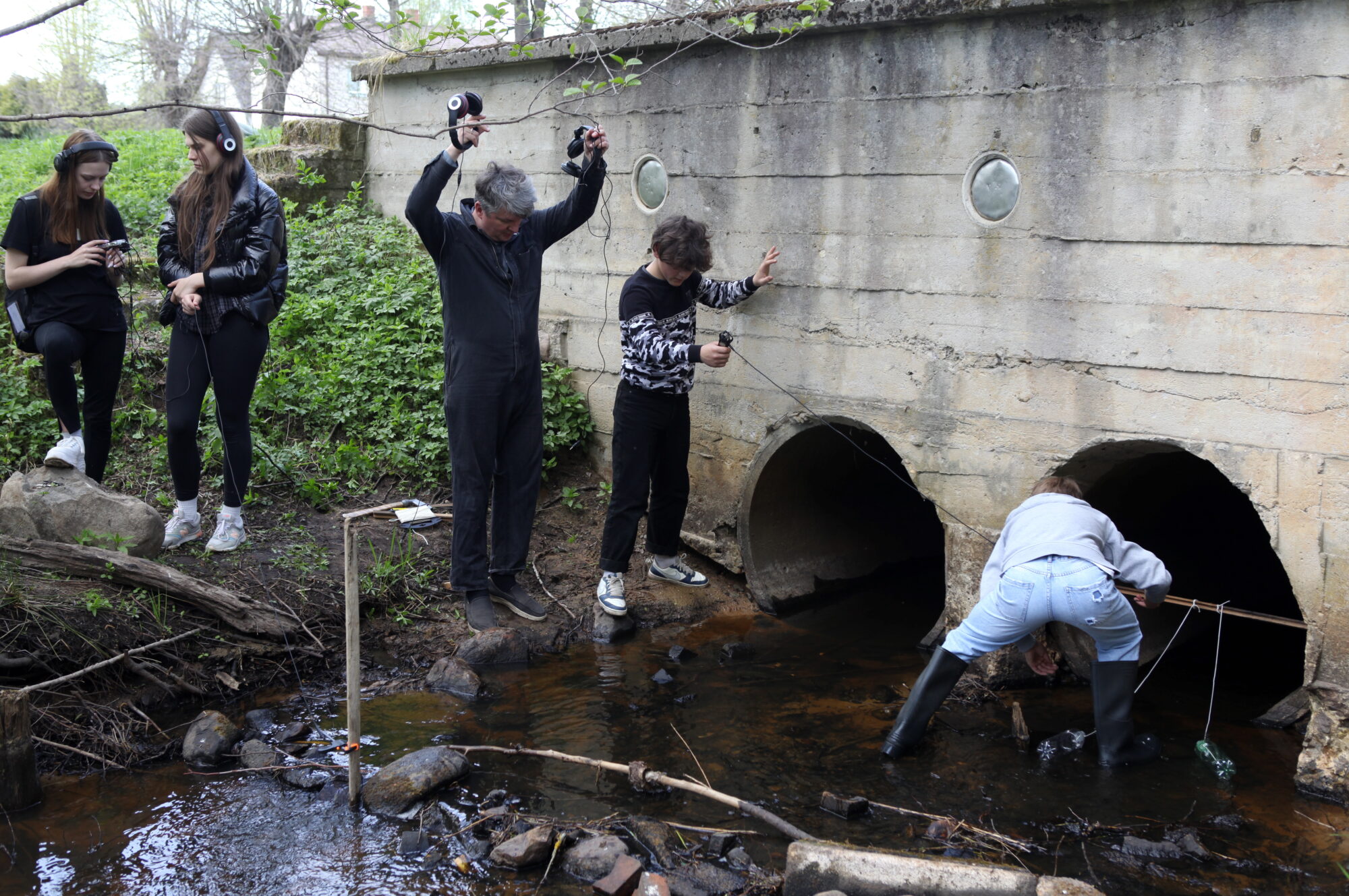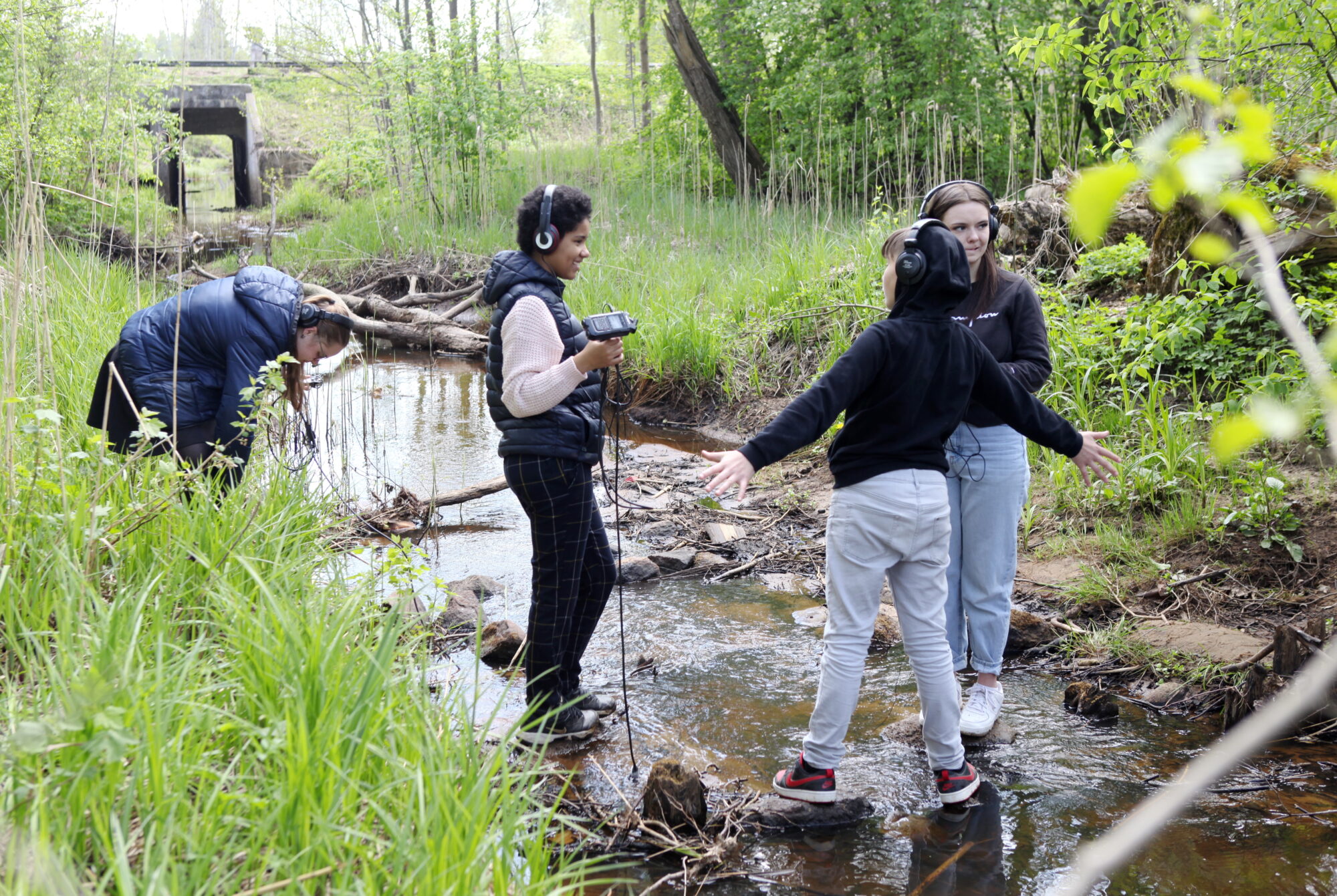June 16, 2023
The artist is present at Strenči Primary School

Within the project “The Artist is Present – Contemporary Art Residencies in Schools”, artists Artūrs Punte and Maksims Šeteļevs spent a busy spring term in Strenči Primary School, introducing 6th, 7th, 8th and 9th grade pupils to the world of ambient sounds.
Artūrs Punte describes his collaboration with the pupils as follows: “What we do can be divided into two parts: the technical part is that we try to give basic skills in recording techniques, we try to show the difference between different recording methods, microphones, distances, volumes, sensitivity. But on the conceptual level, which is the second plate of this residency, we’re trying to show that it’s cool not only to do something yourself, but to listen to what’s already there. To demonstrate a kind of ecological approach to art, where the artist is not an interloper with his big self and ego manifestations, but who is more of an observer.”
In order to learn how to record and map a soundscape, the work was organised in four parts. The first phase was a sound walk, the aim of which was to learn how to get quiet for a while and listen to the sounds around you. Back in the classroom, the pupils drew a sound map, noting down the sounds that remained in their memory. “We started with the ability to remember, to notice, to hear. Also to be a bit dumb for a while – to learn how to listen, without any recording,” says Maksims Šenteļevs.
The next stage was dedicated to learning how to record sounds, so that students could technically record even quiet and imperceptible sounds. Starting in pairs, one responsible for creating the sounds and the other for documenting them, the pupils were asked to play the role of a sound hunter and collect special sounds that had been specially triggered.
In the third part of the training, the task became more complex: the artists went on a walk with the pupils to places chosen by the pupils to document natural soundscapes. Artist Maksim says that this section is particularly difficult because all the little glitches, such as a gust of wind, wires touching, even breathing too loudly, can be heard on the recording.
In the final stage of the work, students had the opportunity to work with special equipment – hydrophones and surface microphones – that allow them to record sounds underwater or capture vibrations in hard materials. Students learnt techniques and methods to be able to create sound installations independently.
“Now we look forward to seeing what the young artists will fish out of the big Strenči sound pond.”
Photos: Lita Millere

